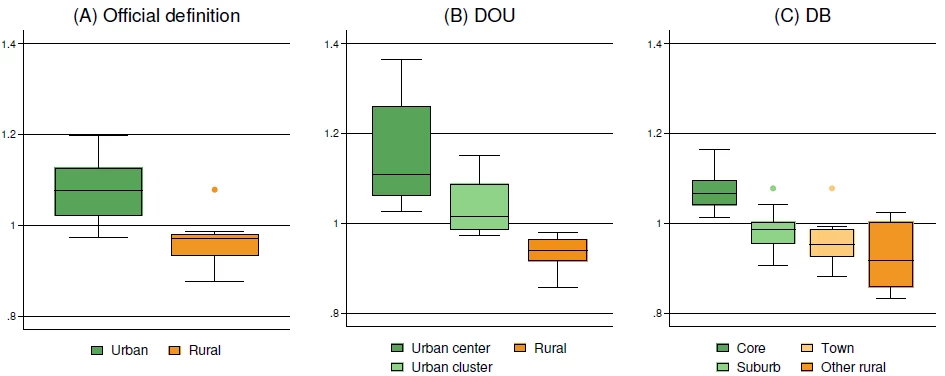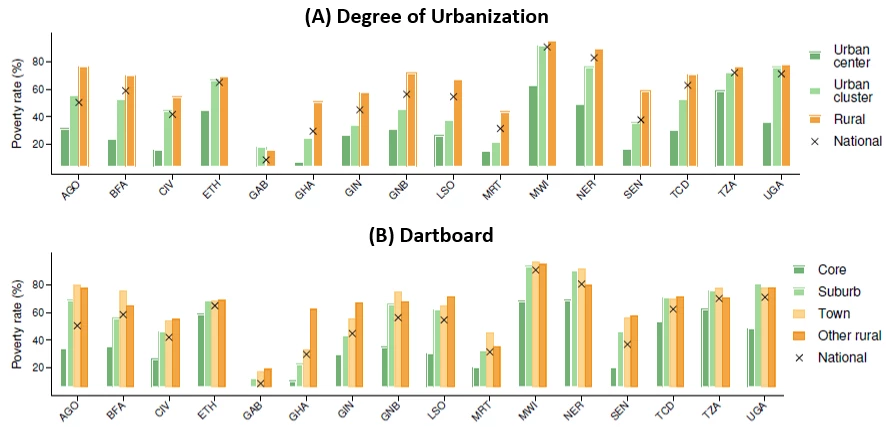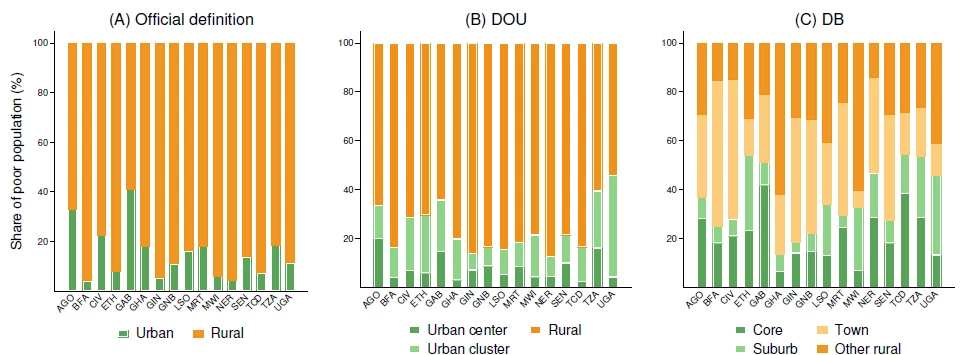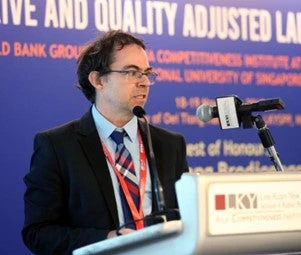 A grayscale photo of woman holding a chicken standing on a sidewalk. | © Hennie Stander / Unsplash
A grayscale photo of woman holding a chicken standing on a sidewalk. | © Hennie Stander / Unsplash
As we highlighted last week in a companion blog, countries vary considerably in how they define urban areas, which makes comparison of urbanization patterns across countries difficult.
However, that’s not the only problem—the lack of standard urban definitions also throws up challenges for poverty measurement and analysis, such as the disaggregation of poverty statistics between urban and rural areas in a comparable manner. This becomes a critical hindrance, both to policy research (for example, to examine how urbanization facilitates poverty reduction) and design (for example, to determine how to allocate resources spatially).
To overcome this challenge, a recent policy research working paper integrates two recently developed approaches to the consistent delineation of urban areas—the Degree of Urbanization (DOU) and the Dartboard (DB) method —into the World Bank’s framework for international poverty comparisons. In this blog, we highlight some key findings from this working paper, based on a sample of 16 countries from Sub-Saharan Africa (SSA).
We find that the cost of living is higher in high-density urban areas.
It is not evident whether monetary poverty is always lower in more densely populated urban areas than in rural areas, even though the cost of urban living tends to be higher. Using household budget surveys, we measured the subnational-level cost of living for 16 SSA countries.
Using the DOU and DB approaches to define urban areas, we noticed a distinct gradient with the cost of living being higher in more densely populated urban areas than in less densely populated urban areas, which, in turn, have a higher cost-of-living than rural areas (Figure 1).
Figure 1. Cost of living index across 16 SSA countries, circa 2015.

Source: Nakamura et al. (2023).
Note: The boxplots show the range of 16 spatial deflator values for each geographic category. The spatial deflators indicate cost of living (normalized to 1 at the national level in each country) and are used to deflate household consumption expenditures for poverty measurement. Urban areas are defined by the official definitions (A), the Degree of Urbanization (B), and the Dartboard method (C).
Poverty incidence is lower in higher-density urban areas.
However, even after purchasing power is discounted for the higher cost of living, urban poverty incidence is found to be lower than rural poverty incidence in the 16 Sub-Saharan African countries (Figure 2). Poverty incidence is particularly low in higher-density urban areas (that is, urban centers in the case of the DOU and urban cores in the case of the DB approach).
However, it is important to not automatically conclude from this that cities support people to escape poverty, as it is also possible that poverty rates in urban areas are lower because of selective migration of relatively wealthy people from rural areas.
Figure 2. Poverty incidence across 16 SSA countries, circa 2015.

Source: Nakamura et al. (2023).
Note: Poverty is measured with the extreme poverty line ($2.15 in 2017 PPP terms). Urban areas are defined by the Degree of Urbanization (A) and the Dartboard method (B).
More poor people live in urban areas than previously thought.
Despite the low poverty incidence, urban areas account for a larger share of the poor population than previously thought. When the official urban definitions are used, 80 percent of poor populations live in rural areas in most countries. When we apply the DOU classification, most countries' urban share of poor populations––represented by the green bars in the figures––increases while the median urban share of the poor in the 16 SSA countries increases from 13 to 21 percent. Urban shares reach nearly 40 percent in Angola and Gabon and in a few other countries, such as Côte d’Ivoire, Ethiopia, Tanzania, and Uganda. Urban shares of the poor population are even higher when the DB approach is used to define urban areas––high-density urban cores accommodate a large share of poor populations in many countries.
Figure 3. The geographic composition of the poor population across 16 SSA countries, circa 2015.

Source: Nakamura et al. (2023).
Note: Poverty is measured with the extreme poverty line ($2.15 in 2017 PPP terms). Urban areas are defined by the official definitions (A), the Degree of Urbanization (B), and the Dartboard method (C).
How many of the world’s poor live in urban areas?
As the above results demonstrate, moving from the use of official definitions of urban areas, which vary widely across countries, to definitions that are consistent across countries and, therefore, allow for apples-to-apples comparisons, can have profound implications for our understanding of the distribution of poverty across urban and rural areas.
The next step is to expand our analysis to additional countries and gradually move toward a full global analysis of the distribution of poverty across urban and rural areas. This will allow us to answer the fundamental, but currently unanswered, question: how many of the world’s poor live in urban areas?




Join the Conversation